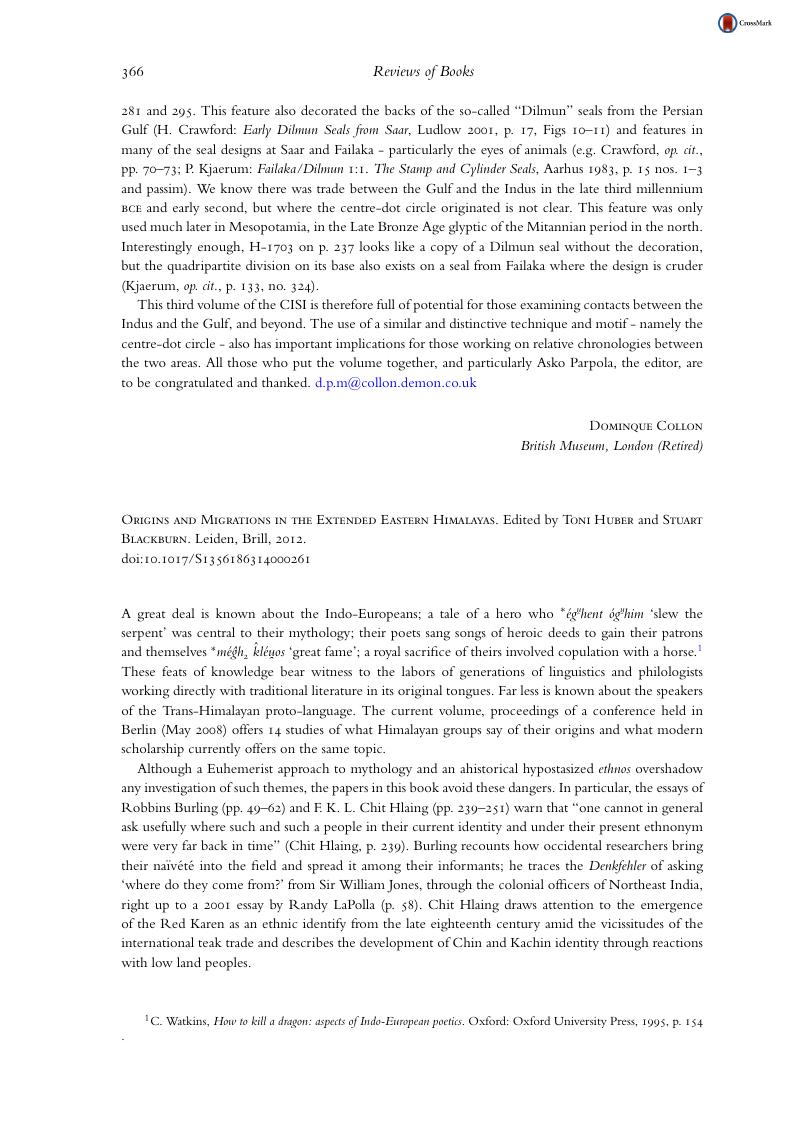No CrossRef data available.
Published online by Cambridge University Press: 04 June 2014

1 Watkins, C., How to kill a dragon: aspects of Indo-European poetics. Oxford: Oxford University Press, 1995, p. 154 Google Scholar.
2 Although it comes from a work of fiction, Childs might have mentioned, for example, that in the Mi la ras paḥi rnam thar by Gtsaṅ smyon He ru ka Rus paḥi rgyan can (1452–1507), the mother of Mi la ras pa sends him a letter using a yogin as an intermediary ( de Jong, J. W., Mi la ras pa’i rnam thar: texte tibétain de la vie de Milarépa. ‘S-Gravenhage: Mouton. 1959, p. 44 Google Scholar). This episode shows that to Gtsaṅ smyon's audience the use of yogins as couriers for long distance communication was plausible.
3 Blackburn (The sun rises : a shaman's chant, ritual exchange and fertility in the Apatani Valley. (Leiden, 2010)) and Gaenzle (Ancestral voices: oral ritual texts and their social contexts among the Mewahang Rai of East Nepal. (Münster, 2002)) have respectively published collections of Apatani and Rai oral literature, but do not provide the original language for the texts quoted in the volume under review.
4 楊正勇, Yang Z., ed. 支格阿魯文化研究: 首屆中國彝族支格阿魯文化研討會論文集 Zhigealu wenhua yanjiu: shoujie Zhongguo Yizu Zhigealu wenhua yantaohui lunwenji. Kunming: 雲南民族出版社 Yunnan minzu chubanshe, 2010 Google Scholar
5 Hemacandra, C., Numita kāppā. (Imphal, 2008)Google Scholar.
6 de Beauvoir Stocks, C., “Folk-lore and customs of the lap-chas of Sikkim.” Journal and Proceedings of the Asiatic Society of Bengal (new series) 21 (1925), pp. 325–505 Google Scholar.
7 Post, M. W., “Prosody and typological drift in Austroasiatic and Tibeto-Burman: Against ‘Indosphere’ and ‘Sinosphere.’” In Srichampa, S., Sidwell, P. and Gregerson, K. J., Eds., Austroasiatic Studies: Papers from ICAAL4. Canberra, Pacific Linguistics, 2011: 198–211 Google Scholar.